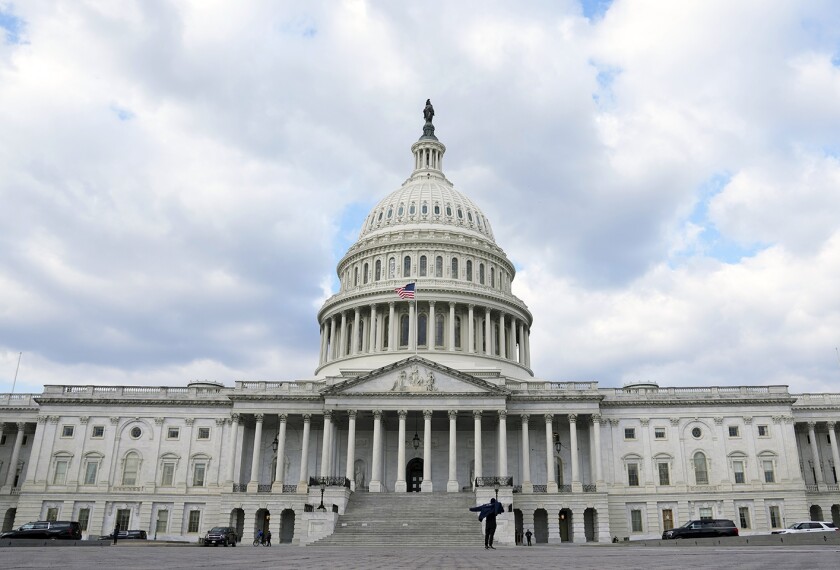Worried about a looming funding shortfall in their state’s prepaid-college-tuition plan, South Carolina lawmakers are weighing whether to close the plan to new participants, a course some other states already have taken.
Like those in some other states, South Carolina’s 10-year-old plan is on shaky financial footing because growth in the fund has failed to keep up with rising tuition. At least five states, including Colorado, Kentucky, Ohio, Texas, and West Virginia, have closed their plans—some temporarily—to new enrollees, to avoid worsening the funds’ financial problems. Texas alone is projecting a deficit that could total billions of dollars in the next two decades.
“That seems to be the trend,” said Joe Hurley, the author of The Best Way to Save for College: A Complete Guide to 529 Plans. “I don’t see any new plans opening up. All I see are plans closing.”
Prepaid-tuition plans—a type of 529 plan, named for a section of the federal tax code—have been in existence for nearly 20 years and have been offered in at least 18 states. Many states also provide another sort of 529 program, a college “savings plan” that offers tax advantages for families to put money in a personal investment account similar to a 401(k) retirement plan.
Prepaid plans allow family members and others to pay a future college student’s tuition upfront, generally at a rate close to tuition costs at a four-year public college in the state at the time they enter the plan. Often, the intended recipient is an infant or toddler at the time contributions begin.
Prepaid plans were designed to offer parents predictability in tuition costs. The average tuition at a four-year public college has gone up nearly 40 percent over the past five years, according to the College Board, a New York City-based nonprofit organization.
States typically invest the money held in trust by prepaid plans, expecting that investment gains will keep up with tuition increases. But the national economy began to falter around 2001, causing returns to slow, just as costs soared at many public universities. Some states shut down their plans to avoid adding to the funds’ financial difficulties.
South Carolina’s plan, which has more than 6,300 participants, faces a significant shortfall. Right now, tuition at the University of South Carolina is $7,808 annually. Based on historical data, the state projects that tuition will increase at 9 percent annually and the fund will yield an average return of 7.25 percent per year. That means the program would have a $63 million unfunded liability by 2028, the year the last of the families already enrolled will receive their payouts.
Rising Tuition to Blame
Contracts for new plan participants had been based on the premise that tuition would go up by about 7 percent per year, which had been the average. But in recent years, tuition has jumped by double-digits, including a nearly 21 percent spike in the 2002-03 school year.
Though increases have slowed somewhat—this school year saw a hike of just under 7 percent—some policymakers still are worried about the plan’s future.
Gov. Mark Sanford, a Republican, proposed nearly $42 million in his fiscal 2008 budget to help close the gap. South Carolina’s House provided $26 million in a budget measure approved this month and included language that would close the program for one year. The budget legislation now will go to the Senate for consideration. A measure passed in the Senate would keep out new enrollees for a year.
Prohibiting families from joining would help limit the state’s liability, said Melody J. Lamm, the program manager.
“Essentially, if we’re not going to have the full-funding backing to make the program solid, we feel like it’s not responsible for us to offer the program in the fall,” she said.
Texas Troubles
But even states that have closed their plans to new enrollees face financial difficulties. Texas’ plan, which has been closed since 2003, could be in the red $1.74 billion to $3.31 billion by 2029, according to an analysis performed at the request of Susan Combs, the state comptroller. Ms. Combs has cautioned policymakers against reopening the plan.
Some in the Texas legislature disagree. At least two bills introduced this year would permit the Texas Prepaid Higher Education Tuition Board to reopen the state’s plan, in part to spur an influx of cash that could help the plan get back on its feet.
Some states have had success in boosting prices for new enrollees. Washington raised the cost of new contracts, after tuition at public research universities went up 16 percent during the 2002-03 school year. The state’s plan had projected costs based on tuition increases of 7 percent per year. As a result, the plan went from a surplus of $24 million to a deficit of $23 million almost overnight.
To keep the plan open, the program raised the cost of prepurchasing one year of tuition to $5,200 from $4,200. The program experienced an initial drop in enrollment, said Larry Lee, the deputy director for the state’s Guaranteed Education Tuition plan, but has largely rebounded.
Still, that strategy hasn’t worked for every state. South Carolina raised the cost of new contracts last year and saw enrollment drop significantly, Ms. Lamm said. Ohio suspended new enrollment in 2004, after the cost of new contracts appeared to outstrip the plan’s benefits.
“Frankly, we just had to ask ourselves the question of whether it continued to be a good value for plan participants,” said Jackie Williams, the executive director of the Ohio Tuition Trust Authority.





